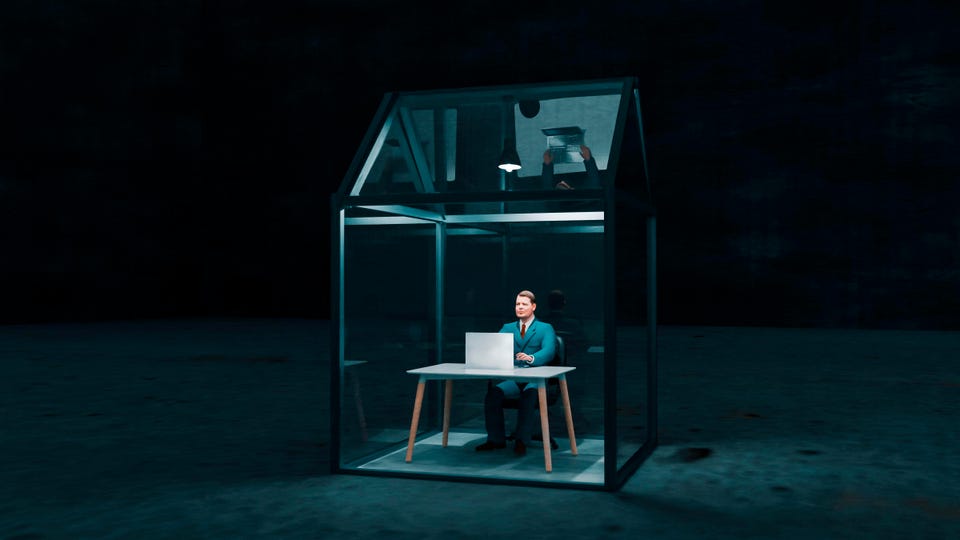E mployees think they’re being just as productive as ever. Bosses aren’t buying it. New data from Microsoft’s Work Trend Index , which surveyed 20,000 employees across 11 countries, finds that despite early signs of a productivity boom during the pandemic—when many workers traded commuting time for more hours of working from home—there’s a steep divide between how workers and their employers see productivity two years later.
Eighty seven percent of employees who responded to the survey said they are productive at work, and Microsoft reported earlier this year that many signs of productivity are up. This spring, the tech giant found that the number of meetings per week among users of its Teams platform had increased by 153% since the start of the pandemic. Overlapping meetings increased by 46%.
At least 42% of people multi-task, actively sending an email or pinging a colleague during a scheduled meeting. Yet as many as 85% of leaders in the survey said hybrid work has made it challenging to be confident employees are being productive. This “productivity paranoia,” as Microsoft calls it in its report, has resulted from the paradox of leaders fearing productivity is being lost , even while hours worked, numbers of meeting and metrics showing actual activity have increased.
“You end up with workers saying ‘I’m doing just great’ and leaders saying, ‘I’m not sure you are,’” Microsoft corporate Vice President Jared Spataro told Forbes in an interview. “There’s real tension that is developing. Every company is working through that.
” Microsoft, of course, is a behemoth maker of productivity software; the research is being released as the software behemoth rolls out new features designed to help address related issues. The company announced a suite of new product updates for Viva, its employee management platform, which will include more integrations of workers “goals” between Viva and Microsoft Teams, for instance, as well as a new app called Viva Pulse for getting worker feedback and a new capability that uses artificial intelligence to match questions from employees with company experts. Two years ago, the company made changes to productivity measures in its tools amid some questions about privacy.
The report comes as macroeconomic figures have shown steep declines in productivity, potentially fueling employers’ fears about how much work their employees are getting done, especially when out of sight. After surging amid the pandemic, U. S.
nonfarm labor productivity , which measures goods and services produced per hour worked, fell at the highest rate in 74 years during the first quarter, and also declined in the second quarter. But many have argued the productivity declines are not really a sign of lazy young workers “ quiet quitting ” or hybrid workers folding their laundry at home instead of answering email. Rather, inexperienced workers taking on new jobs following the Great Resignation, seasoned workers having to train so many new hires and the burnout of those who worked overtime during the pandemic’s early years appear to be what’s really having the greatest impact on productivity declines.
Microsoft’s report says differences show up in the data: Managers of hybrid workers, for instance, are more likely to say they struggle with trusting their employees to do their best work than onsite managers do (49% vs. 36%). Spataro says he thinks managers’ lack of confidence comes not only from not being able to see their workers in hybrid environments, but the relentless pressures and high expectations managers face for business performance.
When he speaks with executives one on one, he says, and reminds them of how productive workers were when the pandemic began, “they’ll say something that really has caught my attention. They’ll say … I wonder if it was just kind of an 18 months to two year surge of adrenaline. We were all pulling together as well as we could.
But if this is going to become the new normal, can we continue to be as productive?” The latest Work Trends Index also found that the offers of free food, rock concerts—or threats of punishment —may not do much to draw people back to the office. What could really get people to return is simply their coworkers: 84% say employees would be motivated to go back to the office by the promise of socializing, and 85% by the opportunity to rebuild team bonds. Survey takers also said they’d be apt to go to the office more often if they knew their team members (73%) or work friends (74%) would be there.
.
From: forbes
URL: https://www.forbes.com/sites/jenamcgregor/2022/09/22/microsoft-says-productivity-paranoia-can-hurt-hybrid-workplaces/



